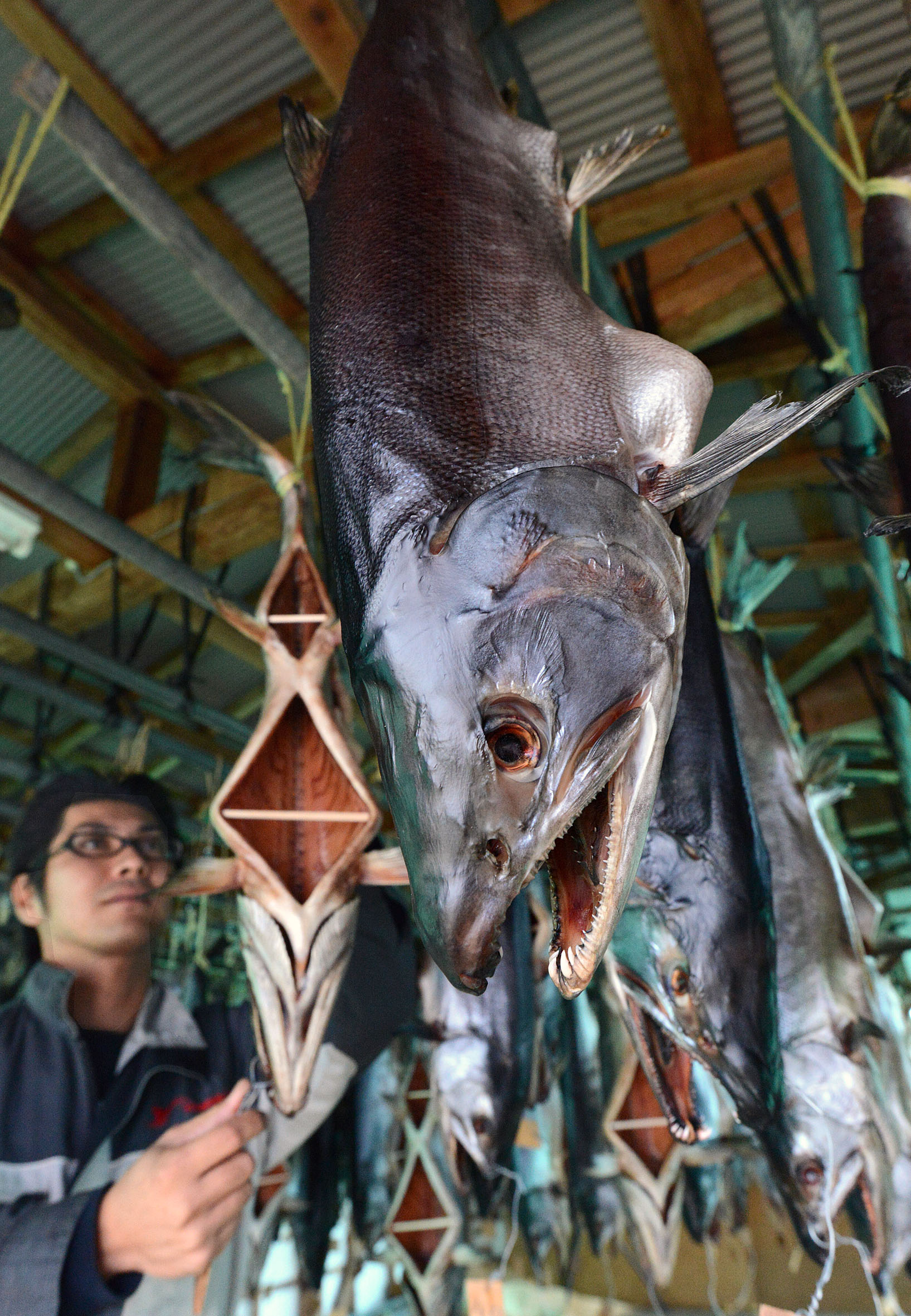
Great flavor of salted salmon produced in Murakami, Niigata Prefecture, is brought out as it is hung and exposed to both moist and dry air according to weather changes.
Takuo Fukumoto
As winter deepens, production of salted salmon is at its peak in Murakami, Niigata Prefecture. Agricultural corporation Shinko Nosan is busy preparing salmon, curing them with salt and drying them for fermentation.
The company’s main business is rice production, but it also engages in production of salted salmon for year-end gifts as a source of revenue during winter. They dress salmon, carefully removing dark flesh and internal organ membranes, and rub salt into it, leave it for up to a week and then wash away the salt and hang it for drying. It is dried for roughly three weeks to bring out the best flavor.
Shinko Nosan dresses salmon using the traditional method called “tomebara” which is handed down over generations in the region. It is a method in which the middle part of the salmon’s belly is left uncut, because cutting the belly from top to bottom reminds one of disembowelment conducted by samurai.
The company plans to ship 3,000 salted salmons nationwide this year, starting on Friday, December 13. Production and sales manager Yoshimasa Itagaki, 35, says the company is making efforts to produce tasty side dish to go with rice so that people will eat more rice.
The salmon is priced at JPY6,700 or more plus a delivery fee.
(Dec. 13, 2013)

